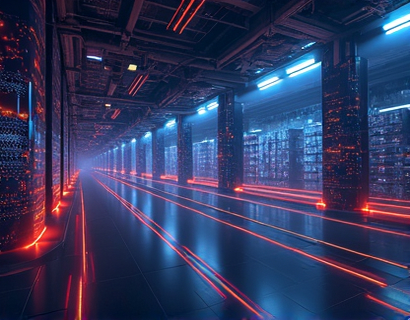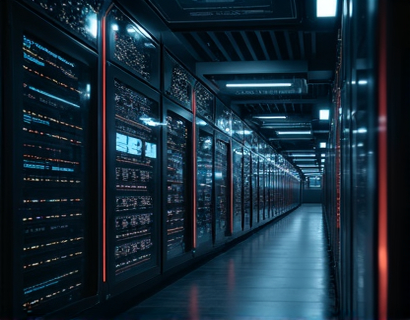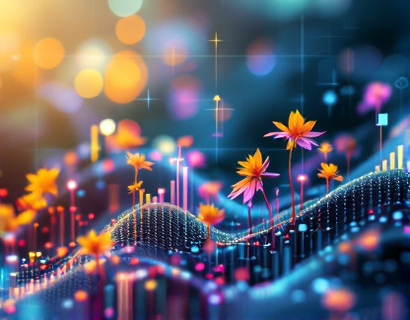Efficient Aquaculture Management: Leveraging Software Solutions for Enhanced Productivity and Resource Optimization
In the rapidly evolving landscape of aquaculture, business owners and managers face numerous challenges that can impact the success and sustainability of their operations. From optimizing resource use to enhancing productivity, the need for efficient management solutions has never been more critical. This article delves into the transformative role of software solutions in the aquaculture industry, highlighting how advanced technologies can streamline operations, boost productivity, and optimize resource management. By embracing these tools, aquaculture businesses can unlock their full potential and thrive in a highly competitive market.
The Importance of Efficient Aquaculture Management
Aquaculture, the farming of aquatic organisms such as fish, shellfish, and plants, has grown significantly over the past few decades to meet the increasing global demand for seafood. However, this growth comes with complexities that require meticulous management. Efficient aquaculture management involves optimizing various aspects of the operation, including water quality, feed management, health monitoring, and harvest scheduling. The stakes are high, as suboptimal management can lead to reduced yields, increased costs, and environmental degradation.
Challenges in Traditional Aquaculture Management
Traditional aquaculture management relies heavily on manual processes and empirical knowledge, which can be time-consuming and prone to errors. Key challenges include:
- Data Management: Collecting and analyzing data from multiple sources to make informed decisions is a daunting task.
- Resource Optimization: Ensuring the efficient use of water, feed, and energy resources to minimize waste and costs.
- Health Monitoring: Detecting and managing diseases and parasites in a timely manner to prevent outbreaks.
- Compliance and Reporting: Meeting regulatory requirements and generating accurate reports for stakeholders.
- Scalability: Expanding operations without compromising efficiency or quality.
These challenges highlight the need for innovative solutions that can address the complexities of modern aquaculture management.
Role of Software Solutions in Aquaculture
Software solutions designed for aquaculture management offer a comprehensive approach to addressing these challenges. These tools leverage advanced technologies such as IoT, AI, and data analytics to provide real-time insights and automated processes. Here’s how software can transform various aspects of aquaculture operations:
1. Data Management and Analysis
Modern aquaculture software platforms enable seamless data collection from sensors and other monitoring devices. This data can be stored, analyzed, and visualized in real-time, providing managers with actionable insights. Key features include:
- Real-Time Monitoring: Continuous tracking of water parameters such as temperature, pH, and dissolved oxygen.
- Historical Data Analysis: Long-term trends and patterns can be identified to inform decision-making.
- Alerts and Notifications: Automated alerts for abnormal conditions or critical thresholds.
By having access to accurate and timely data, managers can make informed decisions that enhance productivity and reduce risks.
2. Resource Optimization
Optimizing resource use is crucial for the sustainability and profitability of aquaculture operations. Software solutions can help in several ways:
- Feed Management: Precise control over feed distribution based on real-time data, reducing waste and ensuring optimal growth.
- Energy Management: Monitoring and optimizing energy consumption for pumps, aerators, and other equipment.
- Water Usage: Efficient water circulation and filtration systems to minimize water loss and maintain water quality.
These optimizations not only reduce costs but also minimize the environmental footprint of aquaculture operations.
3. Health Monitoring and Disease Management
Health is a critical factor in aquaculture success. Software solutions can enhance disease management through:
- Early Detection: Advanced algorithms and machine learning models can predict disease outbreaks based on environmental and biological data.
- Treatment Tracking: Record and manage treatment protocols to ensure compliance and effectiveness.
- Health Reporting: Generate detailed reports for regulatory compliance and stakeholder communication.
By proactively managing health issues, aquaculture businesses can reduce losses and maintain high-quality production.
4. Compliance and Reporting
Navigating the regulatory landscape is a significant burden for aquaculture operators. Software solutions can streamline compliance and reporting processes:
- Regulatory Tracking: Stay updated on local, national, and international regulations with real-time alerts.
- Document Management: Store and manage all necessary documents and records in a centralized system.
- Automated Reporting: Generate accurate and comprehensive reports for inspections and audits.
These features ensure that operations remain compliant, reducing the risk of penalties and enhancing reputation.
5. Scalability and Flexibility
As aquaculture businesses grow, their management needs evolve. Software solutions are designed to scale with the business, offering flexibility and adaptability:
- Modular Architecture: Add or remove modules as needed to match the growing complexity of operations.
- Integration Capabilities: Seamlessly integrate with existing systems and devices to create a cohesive management ecosystem.
- User-Friendly Interfaces: Intuitive dashboards and interfaces ensure that users of all technical backgrounds can effectively utilize the software.
This scalability ensures that businesses can expand their operations confidently, knowing that their management tools will grow with them.
Benefits of Implementing Aquaculture Software
The adoption of software solutions in aquaculture management offers numerous benefits, including:
Enhanced Productivity
Automated processes and real-time data enable managers to optimize operations, leading to higher yields and faster growth rates. For example, precise feed management can improve feed conversion ratios, resulting in healthier and more robust aquatic organisms.
Cost Reduction
By optimizing resource use and reducing waste, aquaculture businesses can significantly lower operational costs. Efficient energy use and minimized water loss contribute to substantial savings over time.
Improved Decision-Making
Access to comprehensive and accurate data empowers managers to make informed decisions. Data-driven insights can identify areas for improvement, predict future trends, and support strategic planning.
Enhanced Sustainability
Sustainable practices are essential for the long-term viability of aquaculture. Software solutions help reduce environmental impacts through optimized resource use and better waste management, aligning with global sustainability goals.
Better Compliance and Risk Management
Streamlined compliance and reporting processes reduce the risk of regulatory issues and enhance the business’s reputation. Proactive health monitoring and disease management further mitigate operational risks.
Case Studies and Success Stories
Several aquaculture businesses have successfully implemented software solutions, achieving remarkable improvements:
Case Study 1: Large Scale Fish Farm
A large-scale fish farm in Asia integrated a comprehensive aquaculture management software. The farm reported a 20% increase in fish yield and a 15% reduction in feed costs within the first year. Real-time monitoring and automated feed distribution were key factors in these improvements.
Case Study 2: Shellfish Farm
A shellfish farm in Europe used software to optimize water quality and reduce disease outbreaks. The farm saw a 30% decrease in mortality rates and a 10% increase in harvest weight. The software’s predictive analytics played a crucial role in these outcomes.
Choosing the Right Software Solution
With the market offering a variety of aquaculture software solutions, selecting the right one is essential. Consider the following factors:
- Scalability: Ensure the software can grow with your business.
- Integration: Check for compatibility with existing systems and devices.
- User Support: Reliable customer support and training resources are vital for successful implementation.
- Customization: The ability to tailor the software to specific business needs is important for optimal performance.
- Cost: Evaluate the total cost of ownership, including licensing, implementation, and ongoing support.
Conducting thorough research and possibly piloting the software can help make an informed decision.
Future Trends in Aquaculture Software
The aquaculture software landscape is continually evolving, with several trends shaping the future:
1. IoT and Smart Sensors
The proliferation of IoT devices and smart sensors will enhance real-time monitoring and data collection, providing even more granular insights.
2. AI and Machine Learning
Advanced AI and machine learning algorithms will improve predictive analytics, disease detection, and operational optimization.
3. Blockchain for Traceability
Blockchain technology can enhance traceability and transparency in the supply chain, ensuring the authenticity and sustainability of aquaculture products.
4. Cloud-Based Solutions
Cloud-based platforms will offer greater accessibility and flexibility, allowing managers to access data and tools from anywhere.
Conclusion
The integration of software solutions in aquaculture management is not just a trend but a necessity for modern businesses aiming to succeed in a competitive and evolving market. By leveraging these tools, aquaculture operators can achieve enhanced productivity, cost savings, and sustainability. As technology continues to advance, the potential for innovation in aquaculture management is vast, offering exciting opportunities for those willing to embrace the change.










































